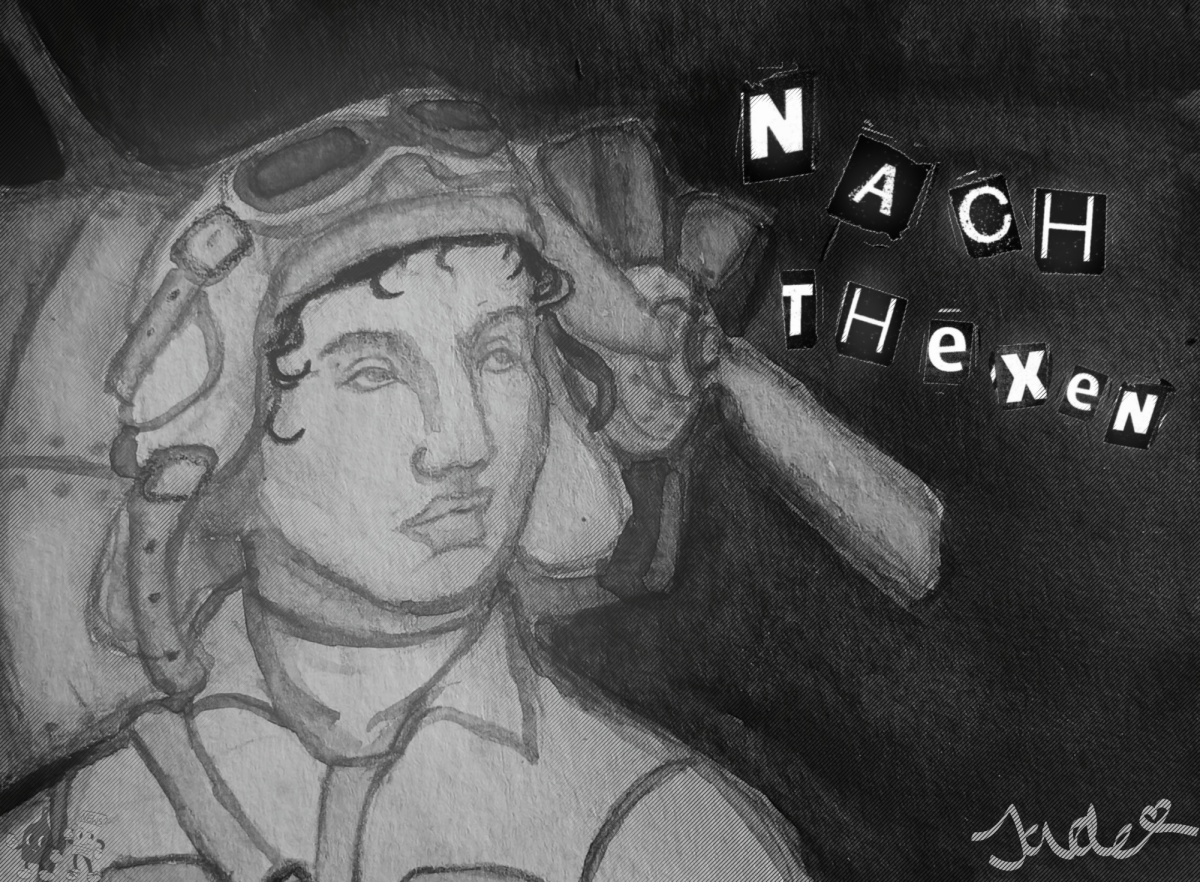Soldiers shifted uneasily in their bunks, their rifles within reach, but what use were they against threats they could rarely see. Then, the sound came—soft at first, like the stirring of dead leaves. A distant hush, a breath on the wind. A swift sweep across the dark sky as it plunged closer to the ground. Broomsticks, they called it in hushed voices. The sound of death riding through the wind. However, by the time they heard it…it was already too late.
Explosions cracked the silence. Fires bloomed in the dark, painting terrified faces in flickering orange. The bombers were never seen, only heard. The quick sweep of their arrival was immediately followed by a silence that ensued afterward. There were no searchlights that could catch them, no alarms that could warn in time. The witches flew too fast, too clever as if the devil himself guided them through the night.
By dawn, the fires smoldered and the bodies were counted.
Sleep had been stolen from the soldiers once again, their nerves frayed, their hands unsteady. They had survived another night—but they knew, with certainty, that the witches would return.
They always did.
The 588th Night Bomber Regiment was an all-female Soviet air force unit that became the stuff of nightmares for the Nazis. Organized by Marina Raskova, a revered Soviet pilot, established the regiment alongside two others following the spew of letters she received from girls around the country who wanted to participate at the front.
It was formed only after she petitioned Joseph Stalin to permit women to take on active combat roles rather than remaining as support. Formed in 1941, the Nachtexen (which translates to “night witches”) were named after the sound their plywood biplanes made as they glided toward their targets, flying relentless bombing runs against German forces. The regiment’s outdated Polikarpov Po-2 biplanes were slow and vulnerable, originally designed for training rather than warfare.
With open cockpits, pilots braved freezing temperatures and enemy fire, flying perilously low to deliver their payloads. Each plane could carry only two bombs at a time, forcing pilots to take 8 or 18 trips per night. To evade detection, the Night Witches developed a unique tactic: cutting their engines midair as they neared their targets, gliding silently before releasing their bombs.
The only warning German soldiers had was the whisper of air through canvas wings—like the sweeping of a witch’s broom. The Nazis were so rattled by these women that shooting down one of their planes earned an Iron Cross, a prestigious military honor. Convinced the pilots were being given supernatural enhancements, German soldiers spread rumors that they were injected with experimental drugs to stay awake and fly so precisely.
However, there was no magic involved—only extraordinary skill and resilience. These women flew without parachutes, as the added weight was deemed impractical. They navigated using only maps, compasses, flashlights, and their own instincts. Wearing ill-fitting men’s uniforms, they stuffed bedding into their oversized boots just to make them wearable.
And to add a feminine touch, they painted flowers on their planes as well as used pencils for their lips. Despite facing harassment and skepticism from their male counterparts, the Night Witches carried out an estimated 30,000 missions and dropped over 23,000 tons of bombs. They were relentless, their bombing strategy aptly named harassment bombing—keeping German soldiers awake, on edge, and constantly under threat. Thirty pilots, including Raskova, were killed in action. Of those who survived, 23 were awarded the title Hero of the Soviet Union, one of the highest honors in the USSR. Yet, despite their incredible contributions, the Night Witches were largely erased from history.
Six months after the war, their regiment was disbanded and women were once again barred from combat roles. Even when the Soviet Union held its grand victory celebration, the Night Witches were excluded—their planes were deemed too slow to participate. The Nazis feared them. The Soviets undervalued them. But their legacy endures. These women took to the skies in frail wooden planes, against impossible odds, and became legends of the night. Though their stories were almost lost to history, recent years have seen a resurgence of interest. Various forms of media (including books, documentaries, and music) have brought attention to their bravery.
The Swedish metal band Sabaton paid tribute with their 2014 song “Night Witches,” capturing their bravery with intense lyrics and powerful instrumentation. Just like the soft sounds of their aircraft in the darkness, their legacy endures—continuously moving through history, relentless.




